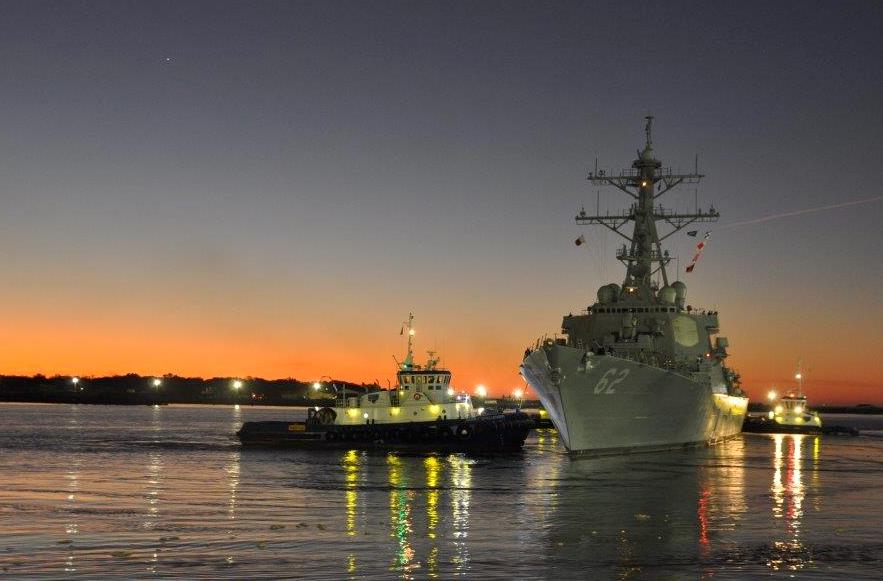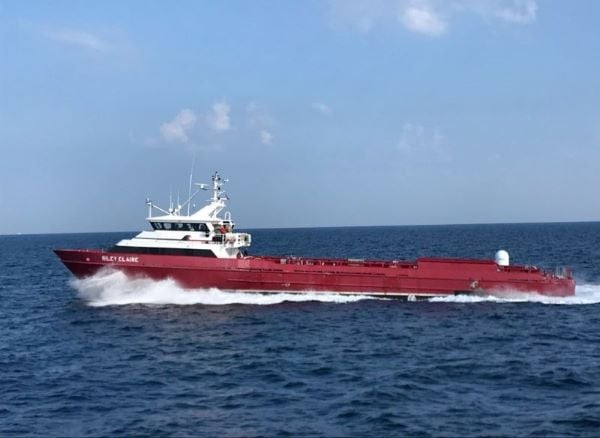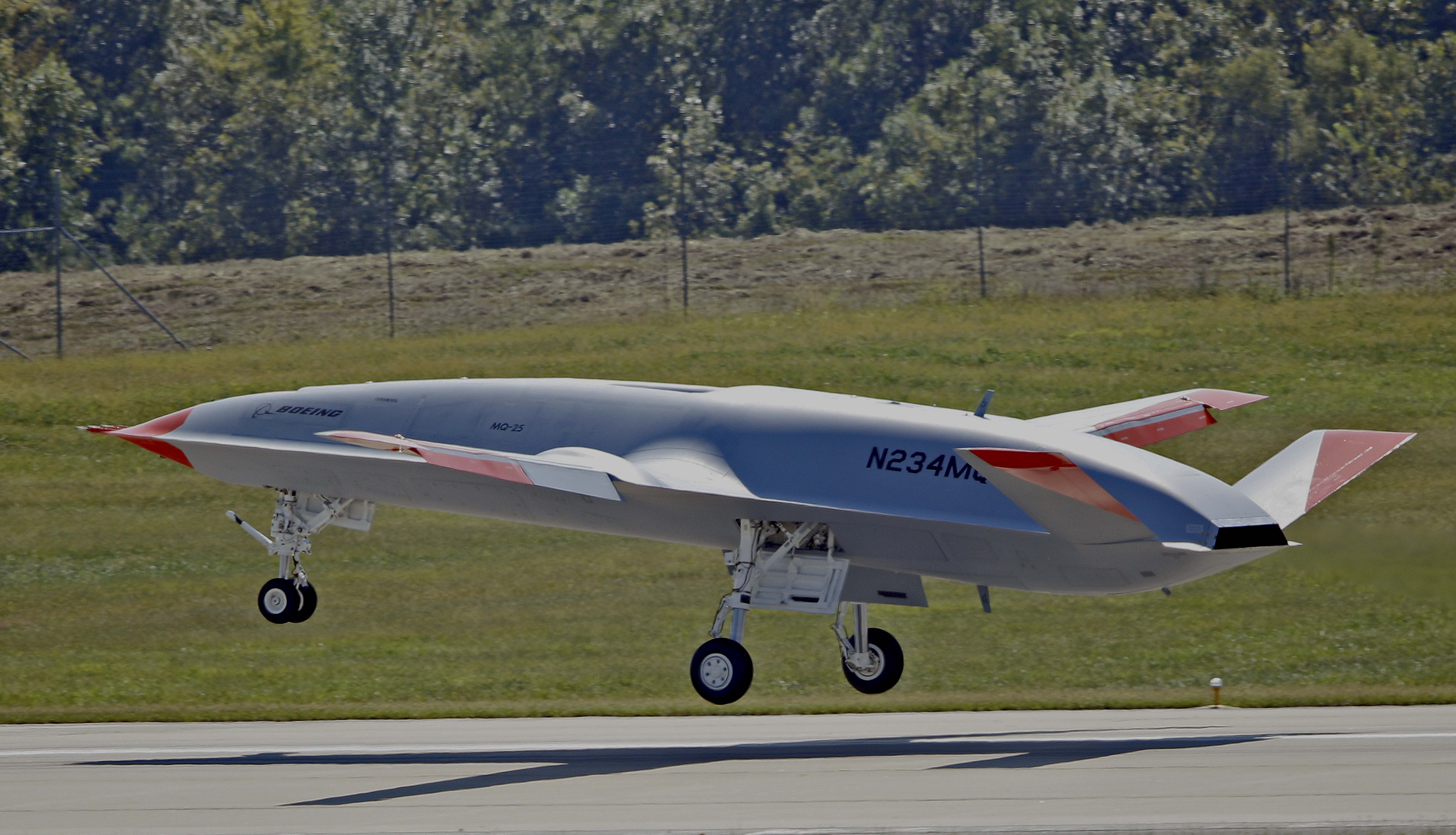
The Senate Armed Services Committee version of the Fiscal Year 2021 National Defense Authorization Act keeps shipbuilding in line with the Navy’s budget request from February but adds additional oversight to the service’s plans for unmanned ships and unmanned aviation, committee staffers told reporters on Thursday.
In February, the Navy requested the lowest number of ships since the sequestration budget caps of the FY 2015 budget, asking for $19.9 billion for eight ship — $4 billion and four ships short of what the service had planned for previously, according to the outlook in its FY 2020 budget request.
In its mark, the Senate added an additional $1.4 billion to the shipbuilding account, bringing the total to $21.3 billion. The additional money is focused on advanced procurement for submarines and keeps the number of new construction ships the same – seven or eight, depending on who is counting. The Navy asked for authorization for amphibious warship LPD-31, bringing its request to eight ships; however, the purchase had been previously authorized by Congress, staffers said today.
The bill language:
- Provides multi-ship contract authority for up to two Columbia -class submarines
- Authorizes a multi-ship contract authority for three San Antonio-class ships and one America-class ship
- Authorizes $500 million for LPD-32 and LPD-33 long lead time material
- Provides for an increase of $472 million for Virginia-class submarine advance procurement to preserve the option to procure 10 Virginia-class ships from FY 2019 to 2023
- Authorizes $260 million for long lead time material for Arleigh Burke-class destroyers
- Accelerates construction of the LHA-9 amphibious assault ship with $250 million above the request
- Authorizes $350 million to improve submarine and surface ship supplier stability.
The committee was cool to the Navy’s requests to start work on a new light amphibious warship, a new supply vessel and future unmanned vessels, largely due to the lack of a long-range shipbuilding budget and the long-awaited Integrated Naval Force Structure Assessment. The Navy had planned to release the documents earlier this year, but they were held for review by Secretary of Defense Mark Esper.
“Not having a requirement and not having a shipbuilding plan made it difficult to support funding requests to move forward on those [programs],” a staffer said.
“I think you’ll see our frustration reflected in our budget tables.”
In addition to the modest plus-up in shipbuilding funds, the bill would put additional restrictions on the Navy’s pursuit of unmanned surface vessels by requiring the service to qualify main engines and generators for the new class of ships. Under the loose concept of USVs put forth by the Navy, the service expects the ships to operate for extended periods of time without a crew to do regular preventative maintenance. The stipulation in the bill would require the Navy to prove the reliability of the engines before allowing vessel procurement, according to a summary of the bill.

“We highlight unmanned surface vessel. It’s an example of a program that needs to pursue sub-system prototyping first because there’s enough unknown subsystems that need to be matured before we try to build the full-scale vehicle,” a staffer told reporters.
“We’re trying to catch things earlier in programs and make full use of land-based testing and land-based test sites for subsystem prototyping.”
The committee also put in new oversight requirements for the Navy’s future carrier air wing. The effort will ask the Navy to create “a fighter aircraft force structure acquisition strategy and report on aircraft carrier air wing composition and carrier-based strike fighter squadrons” that will be needed in 2030 and beyond.
The Navy announced that it would stop its line of F/A-18E/F Super Hornets in favor of devoting its efforts toward pursuing a next-generation carrier fighter.

“The decision to cease F/A-18 procurement after FY 2021 ensures the Carrier Air Wing will maintain capable strike fighter capacity to pace the most stressing threats through the 2030s,” reads a Navy budget document from February.
The Navy’s only unmanned carrier aviation program of record is the unarmed MQ-25A Stingray, an aerial refueling tanker with anticipated initial operating capability in 2024.
The bill also adds $9.1 billion to buy 95 F-35 Lightning II Joint Strike Fighters, 14 more planes than the budget request.
Those include $5.5 billion for 60 Air Force F-35As, $1.2 billion for 12 Marine Corps F-35Bs and $2.4 billion for 23 Navy and Marine Corps F-35Cs.





